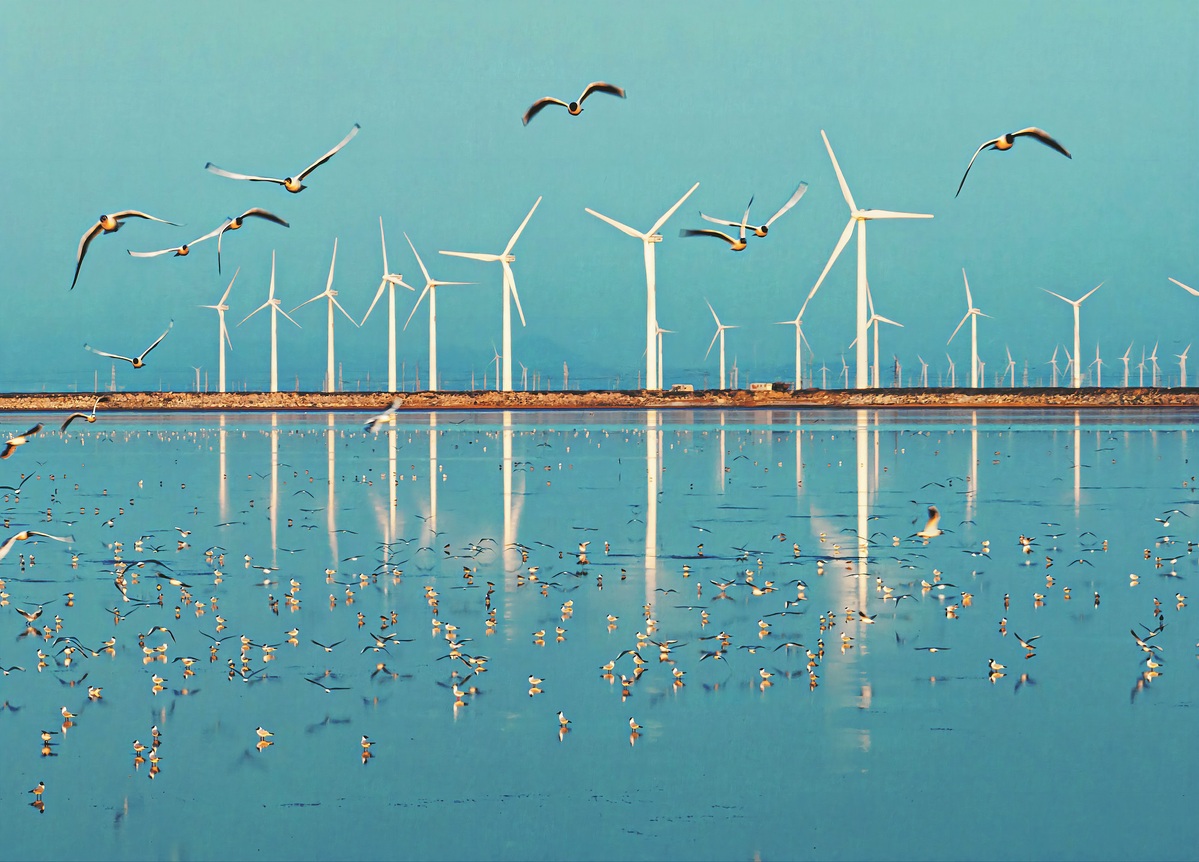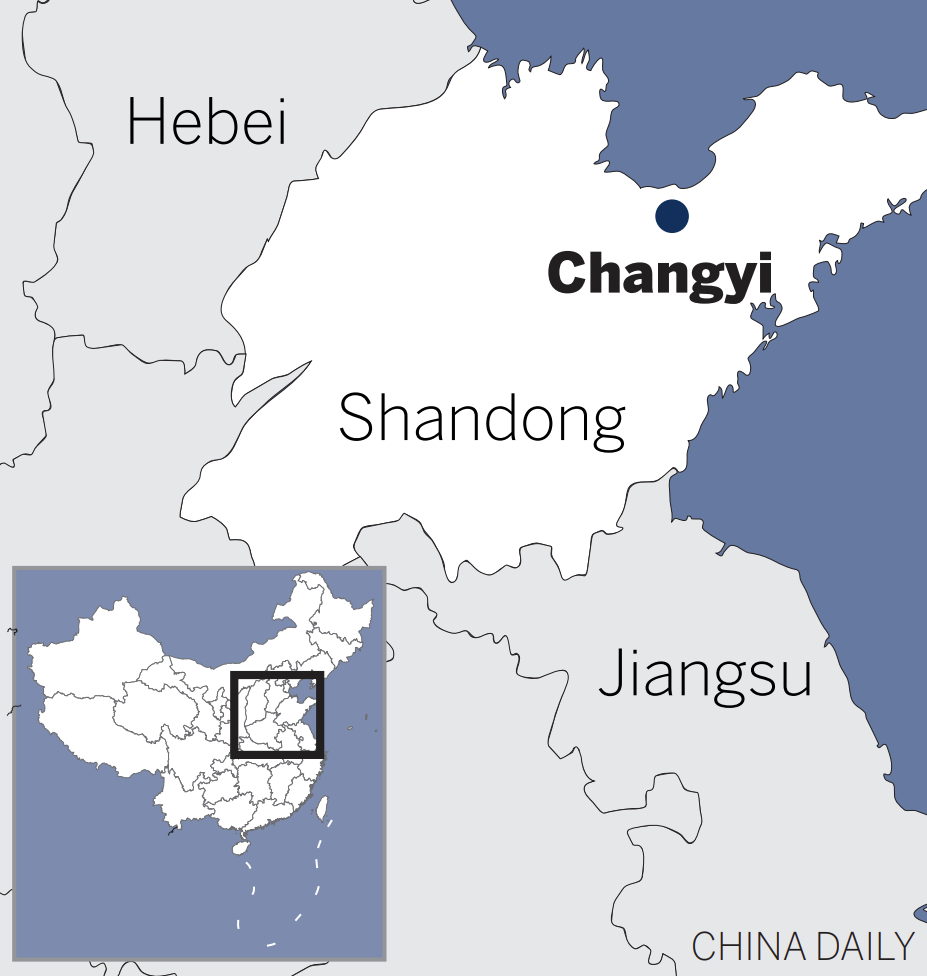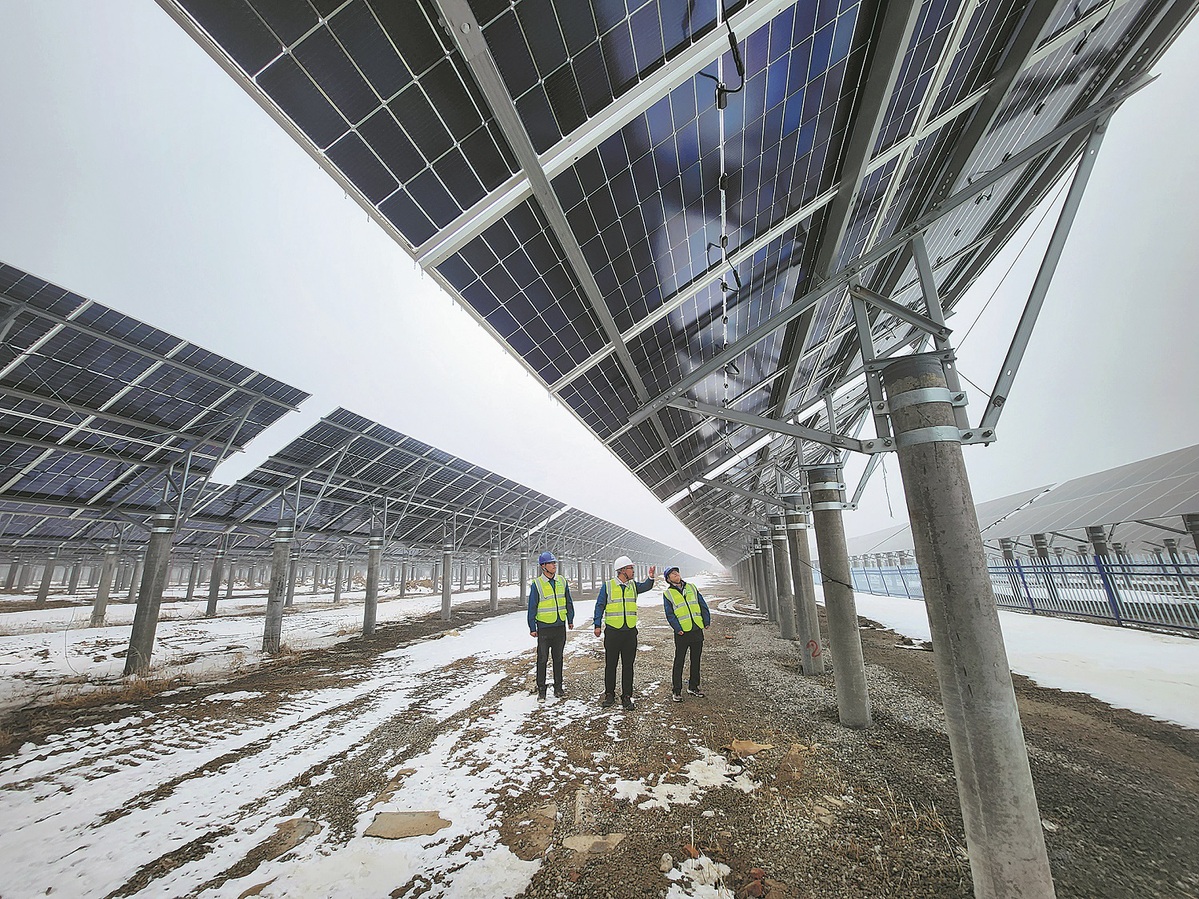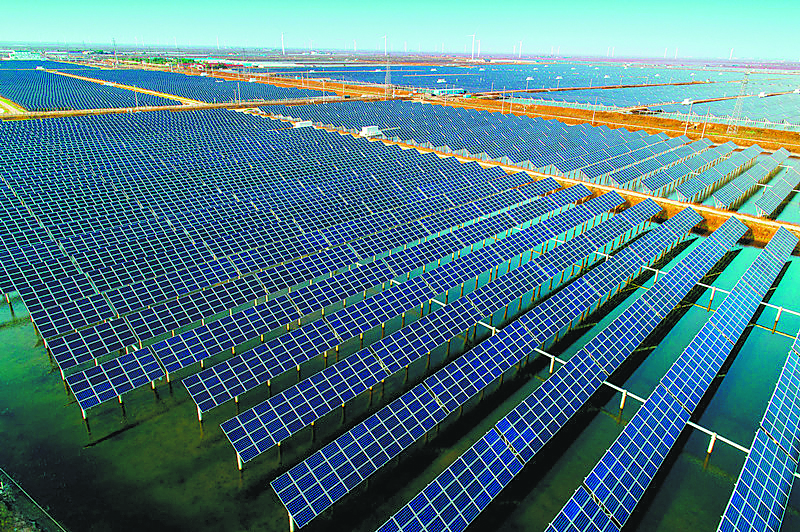
Seabirds fly near wind turbines off the coast of Changyi, Shandong province. CHINA DAILY
Peering out toward the horizon across the Yellow Sea from the small coastal county of Changyi in East China's Shandong province, you'd be forgiven for thinking everything is business as usual — as fishing vessels and container ships carry out their daily business.
But 18 kilometers from the shore, a collection of 50 gargantuan wind turbines whirs into action, feeding the county's thirsty manufacturing industrial base with clean energy.
Changyi is a microcosm of how China is leading the global transition to renewable energy.
It took less than a year for the wind farm to come online after its construction commenced in early 2022. The farm now supplies electricity to foundries, textile factories and other industrial facilities along the shore.
This rapid development speed is typical for how fast renewable energy is coming along nationwide, one local official said.
The wind farms are part of a larger $496 million hybrid wind and solar project still under construction by China Three Gorges Renewables Group.
"We're going full steam ahead with setting up solar panels out at sea," said Cao Jinchao, a manager at the group's Changyi branch, referring to a solar plant being built in the same area.
It features both floating and fixed solar panels and will be operational by the end of this year, he said. Building such projects is challenging due to engineering complexities and severe weather conditions encountered further from the shore.
Panels are being installed to assess the endurance, efficiency and cost-effectiveness of two distinct forms of marine-based solar installations, with the aim of gathering essential data for the expansion of solar projects on the high seas.
Cao said that the hybrid farm, boasting an installed capacity of 300 megawatts, has an extra feature — artificial reefs have been placed in the vicinity to serve as habitats and breeding grounds for marine species.
Monitoring systems are being used to oversee the well-being of the fish and to assess the environmental impact of the renewable power plant. "This hybrid project is shaping up to be a real game changer, combining offshore wind power, a fish hangout and solar power all in one package," he said.
Solar panels near the Changyi. CHINA DAILY
To the sea
Changyi has been one of the leaders in a national drive to grow the renewable energy mix in order to reduce China's economic dependence on fossil fuels.
Since the early 2000s, the manufacturing hub on China's east coast has been harnessing local wind power resources — which can blow 2,800 hours a year on land and 3,300 hours at sea — to meet its fast-growing electricity needs. Over the last decade, annual industrial electricity consumption in Changyi more than doubled from 2.39 billion kilowatt-hours to 4.9 billion kWh, according to government figures.
In recent years, the city has begun experimenting with more efficient land use for sprawling projects.
This can be seen at the expansive Weifang Huabao Textile Co.
In 2022, the company constructed a 62.3-MW solar project aimed at reducing production costs and lowering its carbon footprint.
The project took less than six months to complete. It generates 70 million kWh of electricity a year — equivalent to the energy produced by burning 29,000 metric tons of coal.
In addition to meeting its own power needs, the textile mill was able to sell 20 million kWh of electricity back to the local power grid last year.
Zhang Yuhong, deputy director of Changyi's development and reform bureau, the local economic planner, said such projects have helped Huabao and other export-oriented businesses meet foreign countries' environmental rules and boost the city's manufacturing competitiveness.
"Recently, we approved another rooftop solar project for a casting facility," she said. "Since the factory is an energy-intensive operation, they're really keen on this project."
Local officials have described such projects as distributed photovoltaic, emphasizing their utilization of otherwise idle land for developing green initiatives. These efforts date back to 2016 when the local government commissioned a 100-MW solar farm on a 200-hectare fish farm.

CHINA DAILY
In recent years, the city has expanded this initiative by installing solar panels on sites such as wasteland and animal barns.
The local government is currently committed to a new 2,000-hectare solar project situated on alkaline-salt marshland near the shore.
Once completed, the project is expected to generate 1.65 billion kWh of clean electricity annually, equivalent to the power produced by approximately 700,000 tons of coal.
This development will substantially enhance the city's solar power capacity, which currently stands at 1.9 billion kWh a year.
Changyi is a significant electricity consumer, holding the sixth position for electricity consumption among all counties and cities in Shandong province. The county used to heavily depend on external power sources.
Through the rapid advancement of the new energy sector, Changyi has greatly bolstered its self-sufficiency in power generation, Zhang said.
"This progress hasn't just eased the pressure on electricity demand — it's also ramped up the use of green electricity. By constantly fine-tuning how energy is consumed locally, these moves are really helping out with the whole dual carbon strategy," she said.
Zhang was referring to China's dual carbon goals set in 2020 — peaking carbon dioxide emissions before the end of this decade and attaining carbon neutrality before 2060.
Changyi has also explored other means to boost clean energy supply.
In Xiaying township, a chemical plant overhauled its equipment and harnessed heat from the alkali cooling process to meet winter heating needs in the factory area.
In Longchi township, a 25-MW biomass cogeneration unit was installed, capable of utilizing over half of Changyi's annual farmland straw output.
Additionally, Changyi spearheaded a waste incineration power generation project, processing 220,000 tons of waste annually and supplying 78 million kWh of electricity each year.

Workers inspect solar panels on alkaline-salt marshland near the shore in Dongying, Shandong. CHINA DAILY
Success story
The rising consumption of coal, oil and natural gas globally is widely believed to have contributed to climate change, leading to increasing calls for their phased withdrawal. The country's ongoing transition has been a massive success so far. China led the global charge in solar power last year, accounting for over half of all new installations worldwide.
When it comes to wind power, China's dominance was even more pronounced, with the country responsible for 60 percent of all new global capacity. Within just three years, China more than doubled its total solar and wind power capacity.
According to a BloombergNEF report in 2022, China is currently home to 75 percent of all battery cell manufacturing capacity and 90 percent of anode and electrolyte production.
Source: By Li Lei, chinadaily.com, June 11, 2024 [https://www.chinadaily.com.cn/a/202406/13/WS666a4bf7a31082fc043cc393.html]


